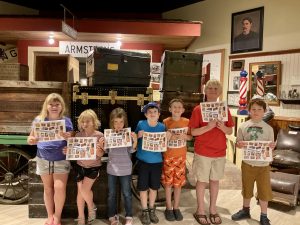Updated July 2021
British Columbia’s Social Studies Curriculum
British Columbia’s Social Studies curriculum emphasizes the development of students into active and informed citizens. This is pursued through the teaching of skills and knowledge in order to think critically.

Throughout the BC curriculum, key concepts from the fields of geography, political science, history, and economics come together in a way that allows students to develop a greater understanding of the world around them. However, to quote from the BC Social Studies Curriculum Goals and Rationale, “students cannot gain this understanding passively through a broad survey of topics and or by receiving knowledge from authoritative sources.”¹ In other words, it is not adequate to simply give content-heavy lectures. Social Studies has moved past an emphasis on memorizing dates and names, or regurgitating facts. Instead, students must be actively engaged in their own learning. This involves student-led inquiry, and the investigation and discussion of open-ended questions.
Despite the global emphasis on technology and innovation, Social Studies continues to play an important role in students’ lives. They are taught how to critically analyze their surroundings, problem-solve, make decisions, and communicate effectively; skills that are all necessary for the adult world.
Historica Canada’s History Report Card
Historica Canada is a national body that promotes and supports the study of history in Canada. In order to foster improvement in the teaching of history in Canada, they publish a History Report Card. An assessment of each province and territory’s historical curriculum is made, including its strengths and weaknesses. From there, recommendations are made with the hope that the quality of Canadian education will be elevated further.
While the 2021 History Report Card names many strengths, it is by focusing on the recommendations that we can further serve the next generation. The general, nation-wide recommendations made include:
- Critical thinking inspired by inquiry. Passive participation and task completion needs to be replaced by active investigation and discovery of topics.
- An emphasis on engaging with local histories. Students of all ages should have opportunities to reflect on their personal and local history, and create connections to the present.
- Diverse perspectives are critical to accomplish a full-bodied understanding of the past. There should be regular study of race, gender and class. The experiences of marginalized groups are vital in order for students to understand the historical context of today’s world.
After an assessment of BC’s Social Studies curriculum, Historica Canada made the following recommendations:
- Political and social history are stronger when they are balanced with one another. The current curriculum uses “Big Ideas” to organize content delivery. However, this creates a division between politics and policies, and the people involved or affected by them.
- A greater variety of methods and depth of learning. The curriculum would be strengthened by a greater use of primary sources, varied forms of assessments, and further opportunities for students to make personal reflections in their study of the past.
You can read the full 2021 Historica Canada History Report Card here:
https://www.historicacanada.ca/content/canadian-history-report-card
How We Can Help
Clearly there is room for improvement in BC’s Social Studies curriculum, and we want to help! The Armstrong Spallumcheen Museum and Art Society (ASMAS) is a non-profit organization that exists to serve the public, including students and educators. The mandate of our museum and archives is the preservation and presentation of the history of Armstrong and Spallumcheen, while our art gallery supports and encourages local art and artists.
We are excited by the possibility of actively engaging with local educators in order to support the delivery of their Social Studies content. Our facility, collection and personnel can aid teachers in ways they see fit. Our doors (or email/phone) are always open to local educators who wish to diversify their lesson plans. No matter the topic, we can facilitate a more meaningful experience for your students both in and out of the classroom. We look forward to working with you!
What We Can Offer
In supporting educators and students, we hope to promote:
- Critical thinking
- Active citizens with a strong sense of community (municipal, regional, provincial, national, global)

- Active learning
Example activities at ASMAS by grade:
Grades K-3
- Archival presentations/activities
- Museum tours/activities
- Museums and art galleries: what they do
Grades 4-7
- Archival presentations/activities/exploration
- Museum tours/activities
- Museums and art galleries: how they function and their role in the community
Grades 8-9
- Archival presentations/activities/exploration and research (examples being a family history workshop or local research)
- Museum tours/activities
- Museums and art galleries: how they function and their role in the community
Grades 10-12
- Archival presentations/activities/exploration and research (examples being a family history workshop or local research)

- Museum tours/activities
- Art gallery analysis
- Museums and art galleries: critical analysis (what influence do they have? Etc.)
Additionally, we are happy to support Social Studies activities in the classroom or wider community. Listed below are several examples, but it is in no way an exhaustive list.
- Walking tour of historic downtown Armstrong
- Exploration of local soldier personnel records from the World Wars (digitalized by Library and Archives Canada)
- The use of historic photos from ASMAS’s database of over 12,000 local digitalized photos
- The use of historic newspapers from ASMAS’s digitalized collection
- Resources for family history work
¹ https://curriculum.gov.bc.ca/curriculum/social-studies/goals-and-rationale
